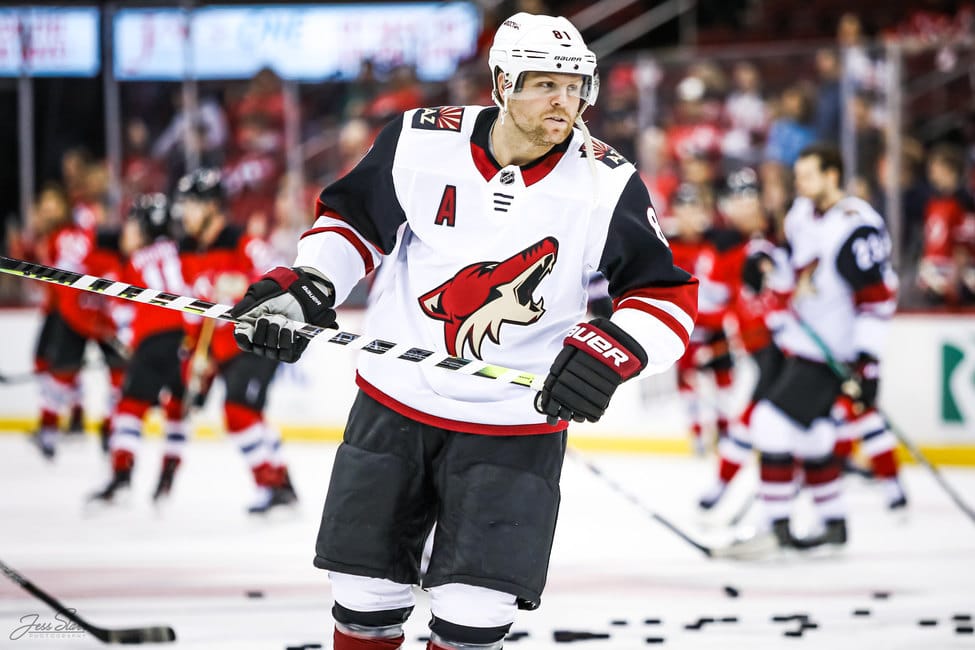There’s been a ton of chatter surrounding the idea that the Edmonton Oilers might be the favorites to land both forward Phil Kessel and defenseman P.K. Subban in free agency. There’s been no confirmation from the organization that they are interested in either player, but the idea does make some sense considering Edmonton is a bit light at right wing and the team could potentially use another experienced defenseman in a depth role.
While my colleague Mark Scheig is convinced these two players would put the Oilers over the top in terms of being a Stanley Cup contender, if Ken Holland is looking at either player — and seriously considering either as a free agent pickup — a few things need to happen first.
Figure Out Which Current Oilers To Trade
One thing fans need to be keenly aware of is that neither player can be added to this roster unless another move (maybe more) is made first. That means a trade or two to send money off of the roster and it’s not as simple as dumping $750K or burying a player in the minors. Even if Kessel and Subban sign for the league minimum, the Oilers are currently over the salary cap and placing Oscar Klefbom and Mike Smith on LTIR doesn’t solve all of their problems when factoring in a pending extension for Ryan McLeod.

That means adding Kessel and/or Subban comes at the expense of either Jesse Puljujarvi, Tyson Barrie, or Warren Foegele. All are productive and in a perfect world, the Oilers probably don’t want to lose any of them. But, if it’s determined a trade needs to be made, Holland will need to find a taker for one or more of these players, get a decent deal and then fill holes left by their departures if Subban or Kessel coming in doesn’t adequately fill them.
Determine If The Net Changeover Is A Positive
Making trades is hard enough in today’s NHL. One-third of the league is over the salary cap and the teams that have money to spend are being extremely cautious and selective when it comes to spending it. Step one for the Oilers is making a move and finding a home for these players. Step two is not getting eaten alive in any deals the GM might make. Step three is determining whether their replacements put the Oilers ahead when all is said and done.

What Holland doesn’t want to do is become a team that simply gives players away because he has no other choice. The Vegas Golden Knights are in that situation, — they have repeatedly given away star players for literally nothing — as are others, and it’s not the spot the Oilers want to, or intend to put themselves in. Holland will be among a select few GMs in the NHL if he can make moves because they better his team, not because he has to. The same rules apply when it comes to Kessel or Subban.
Are Kessel or Subban better than Barrie and Puljujarvi? On paper and when it comes to on-ice production, the answer is probably no. Could they be? Perhaps. If you factor in the cost difference and the flexibility it gives the Oilers moving forward, there is an argument to be made that these moves benefit Edmonton as the season rolls along. The deal isn’t just the value of the players on the ice, it’s about what moving out $7.5 million and only bringing back $3 million offers the Oilers moving forward.
Can Holland do a lot more with that extra $3.5-$4.5 million? Likely. Still, not everyone will agree.
Know The Oilers Can Get Great Value Deals Done
Finally, if the Oilers are able to pull off a trade and they determine the result of making these deals and signing Kessel and Subban are a net positive, Holland absolutely has to get those two veterans signed to contracts that offer unreal value for the franchise. Subban at $3 million is a terrible idea. He comes with no guarantees that he’ll be effective. Subban at $1 million, with some performance bonuses could have value. Kessel at $2 million isn’t probably worth the risk. Kessel at $1 million plus another $1 million potential bonuses might be.
The Oilers need to leverage the fact that they don’t “need” either player. Both Kessel and Subban must understand that they are choosing the Oilers and that comes with sacrifice on the part of the player. If you want to win and play for a contender, all the while upping your production and padding your resume, you take a sweetheart deal now for the chance to hold up the Stanley Cup or to get another deal with another team next summer.
